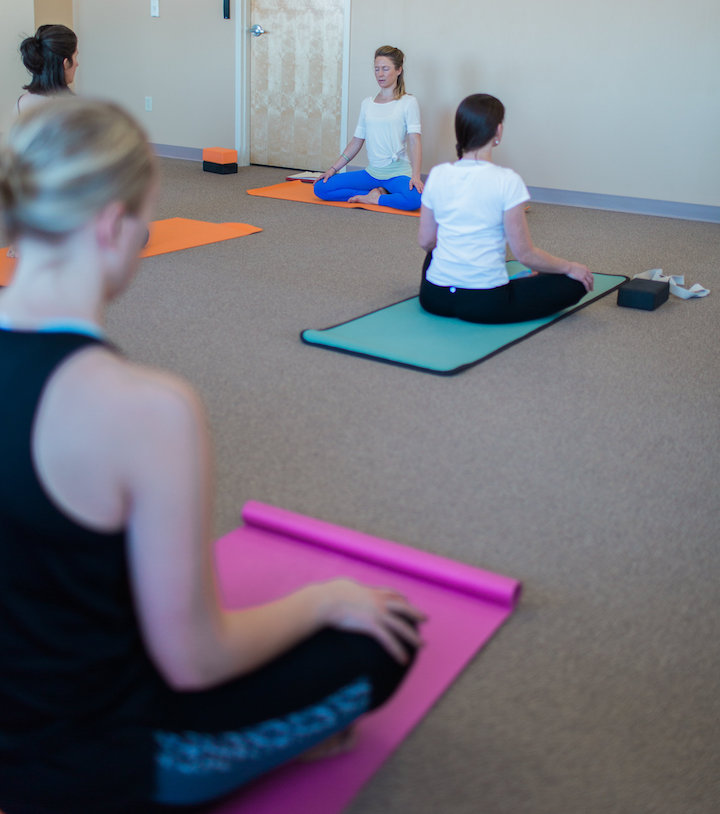
Meditation can change the course of your day by shifting your mindset. A diligent meditation practice can change the course of your entire life…I know because it has mine. When I am meditating daily, I am more connected to my true self, my life purpose, and my abundance. I am happier and more in control of everything in my life, including my thinking and success.
Below is an excerpt from my book…Read on to learn why meditation is one of my favorite self-care rituals. For more transformative self-care rituals like these, order your guide to a healthier, happier, longer life. Enjoy!

Meditation Practices
The gift of learning to meditate is the greatest gift you can give yourself in a lifetime.
–Sogyal Rinpoche
Meditation is therapy. For the purposes of this book, meditation can be defined as single-pointed focus on something other than your thoughts, such as the breath, while maintaining conscious awareness of your thoughts (rather than trying to stop them). Anyone can meditate, and there is no such thing as a good or bad meditator.
Consider the Buddhist analogy: thoughts are like clouds in the sky—unwavering, often out of our control, at times dark and thick and stormy, at times light and fluffy, at times sparse, at times moving quickly and at times slowly passing. As you meditate, watch your thoughts float by like clouds, intentionally choosing to disengage and return to your focal point.
It is important to note that you may have breakthroughs, epiphanies, or simply remember something your need to add to your “to do” list. This is an added benefit of meditation, but not the purpose of meditation. Regardless of what arises during, or the outcome of your practice, there is no end-goal of meditation and we do our best to fluidly move back into our day post-practice.
Meditation should be practiced regardless of your emotional and mental state; however, if you’re in a depressive state, a dynamic or involved practice such as walking or flame meditation—with the eyes open—or a guided meditation—recorded or in a group setting—may serve you more than a passive or silent practice.
Meditation allows space for mental clarity. In time, it teaches us that we can choose which thoughts we would like to give energy to; which thoughts we want to associate and identify with; and which we do not want to engage with, and therefore let float by. When practiced daily with compassionate self-awareness, we start to understand ourselves better—our triggers, our tendencies, our boundaries, our fears, and even our strengths become more apparent. Meditation gives us the opportunity to sift through the clutter of our mind and tune in to our truth.
As we filter through thought patterns, limiting beliefs, and the stories we choose to represent ourselves with, we begin to see our true nature more clearly and realize our full potential. We can never clear away the clutter completely, but we can manage it with daily practice. If we miss a day, a week, a year, or ten years, we get right back to it.
Affirmation: I am not my thoughts and fears. I create my identity.
Fight-or-Flight
Daily meditation can change the brain. The average person has over 70,000 thoughts per day. The brain and nervous system do not differentiate between thoughts and our sensory experiences; thus, anxious, fear-based, or scarcity-driven thoughts can send the body into fight-or-flight the same way an external stimulus can (such as a house fire). In this inflammatory stress-state, the body mobilizes energy to prepare for survival; thus, natural bodily functions like digestion, nutrient absorption, and healing are not prioritized. Existing in this state during times of extreme danger is essential for rapid action and survival; however, existing in this state often is a recipe for poor health, undernourishment, exhaustion, and disease.
In time, with daily practice, we train our brain to intercept this stress response. As our brain changes through meditation, we are able to access our rational thinking (neocortex) more quickly. We develop the awareness to breathe deeply through the nose and de-activate fight-or-flight in order to cultivate ease and acceptance in light of whatever may come our way.
* * * * *
Studying the benefits and theory behind meditation is less important than practicing and experiencing first hand how daily practice can transform you. Some of the common benefits of meditation include, but are not limited to: mental clarity, stress reduction, reduced rate of aging, self-realization, improved sleep, and better relationships. Use the following practices to incorporate meditation into your daily life: What do you learn about yourself?
Body Awareness Meditation
Learn to value your body as much as you value your mind.
Body awareness meditation is an excellent tool for learning to value your feelings just as much as you value your thinking.
The Practice: Sit comfortably or lie down and simply tune in to your body. Notice what sensations you feel. Where do you feel tight or tense? What differences do you notice between the two sides of your body? Are you feeling energized or tired? Do you feel at peace or knots in your stomach? Notice when thought takes over, and gently bring yourself back to your body.
Benefits: Develops mind-body connection; ripens the skill of thought-awareness; focuses the mind; establishes awareness and respect for the body.
Tip: Use this technique throughout your daily life. Recognize how you feel in your physical body. Do you feel energized and confident, only to feel the opposite when you look in the mirror, cannot find an outfit that you like, or receive constructive criticism from a colleague? Make an effort to notice when thoughts come in to prescribe negative judgment. How do your thoughts influence how you’re feeling and visa versa? Thinking is powerful and can take us from feeling empowered to feeling small and uncomfortable in our own skin Notice when this happens and recognize that you have not changed, only your thinking has changed.
Breath Awareness Meditation
The four phases of breath.
For anyone first starting out with meditation, this is a great technique to focus the mind and develop concentration.
The Practice: Focus on all four parts of the breath: the inhale, the space between the inhale and the exhale, the exhale, and the space between the exhale and the inhale. Find stillness in the place where you are empty of breath. Please note, this practice is different than breath control, as you are not intentionally altering the breath, you are simply watching it.
Tip: Let the in breath represent creation. With each inhale we are creating a new moment, and with a conscious inhale we have the ability to consciously create a positive thought or intention. When we are conscious, we have the ability to make any moment exactly what we want it to be.
Let the exhale represent letting go. With each conscious exhale, we have the ability to consciously let something go: a thought, idea, story, sabotaging belief. Even if we just let it go for a single moment, the more we practice letting go of something, the more likely we are to be able to let it go forever.
…(continued)
For more meditation, self-care rituals, and affirmations, check out my book!
 About the Author
About the Author
Allie Andrews is the Founder and Program Director at OmBody Health. She is a Certified Health Coach, author, and is pursuing her Master’s Degree in Education with a focus in Corporate Wellness. Allie and her team have been transforming employee wellbeing since 2014. Learn more.

